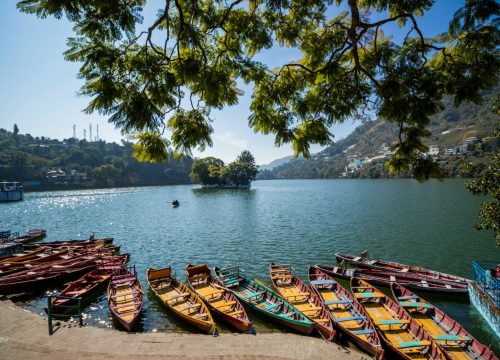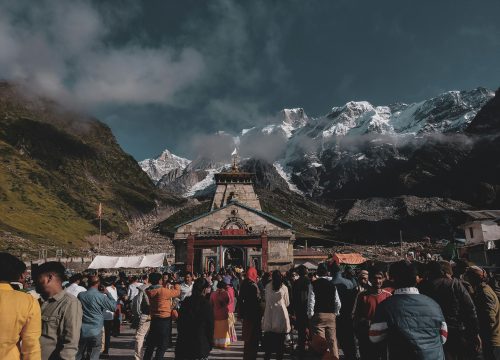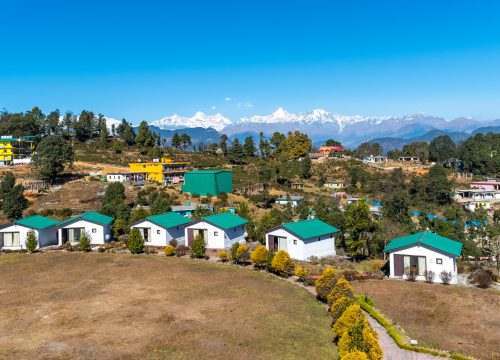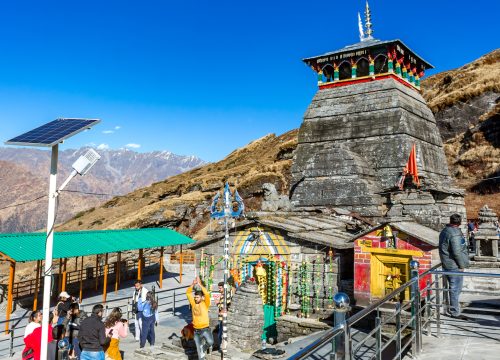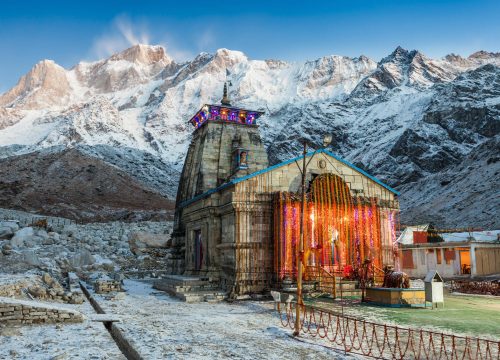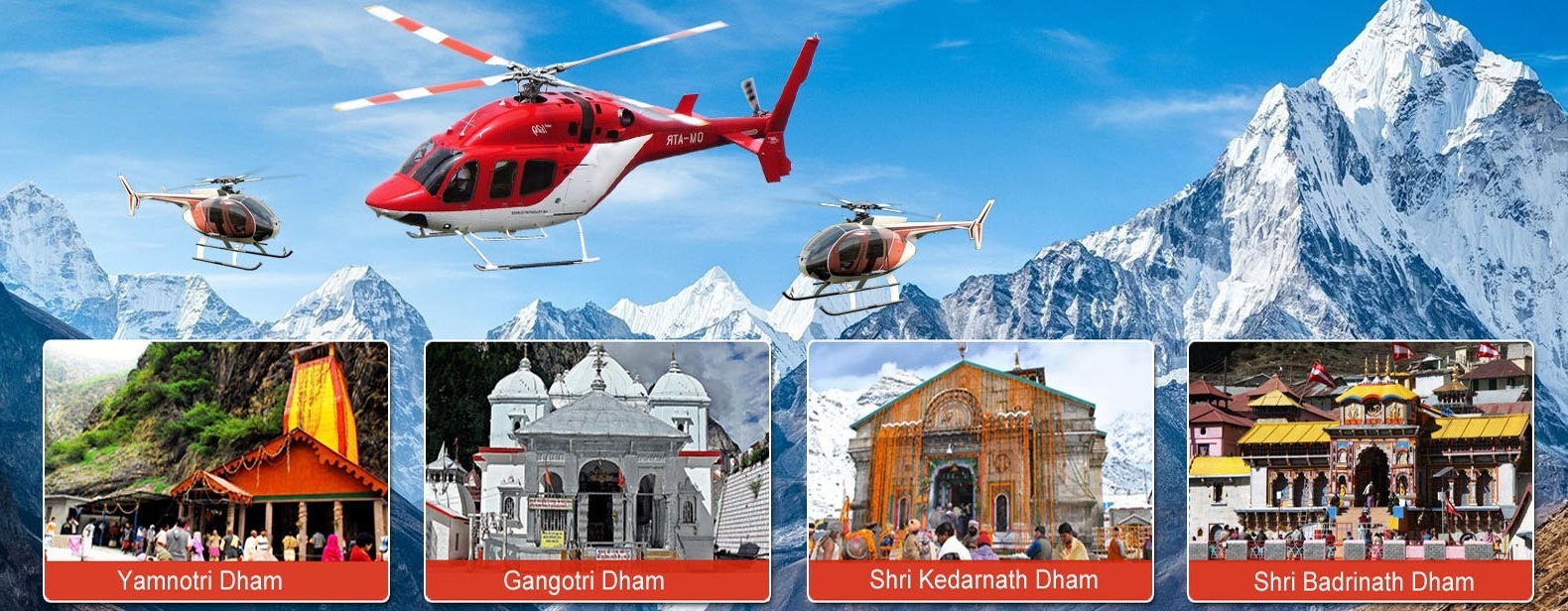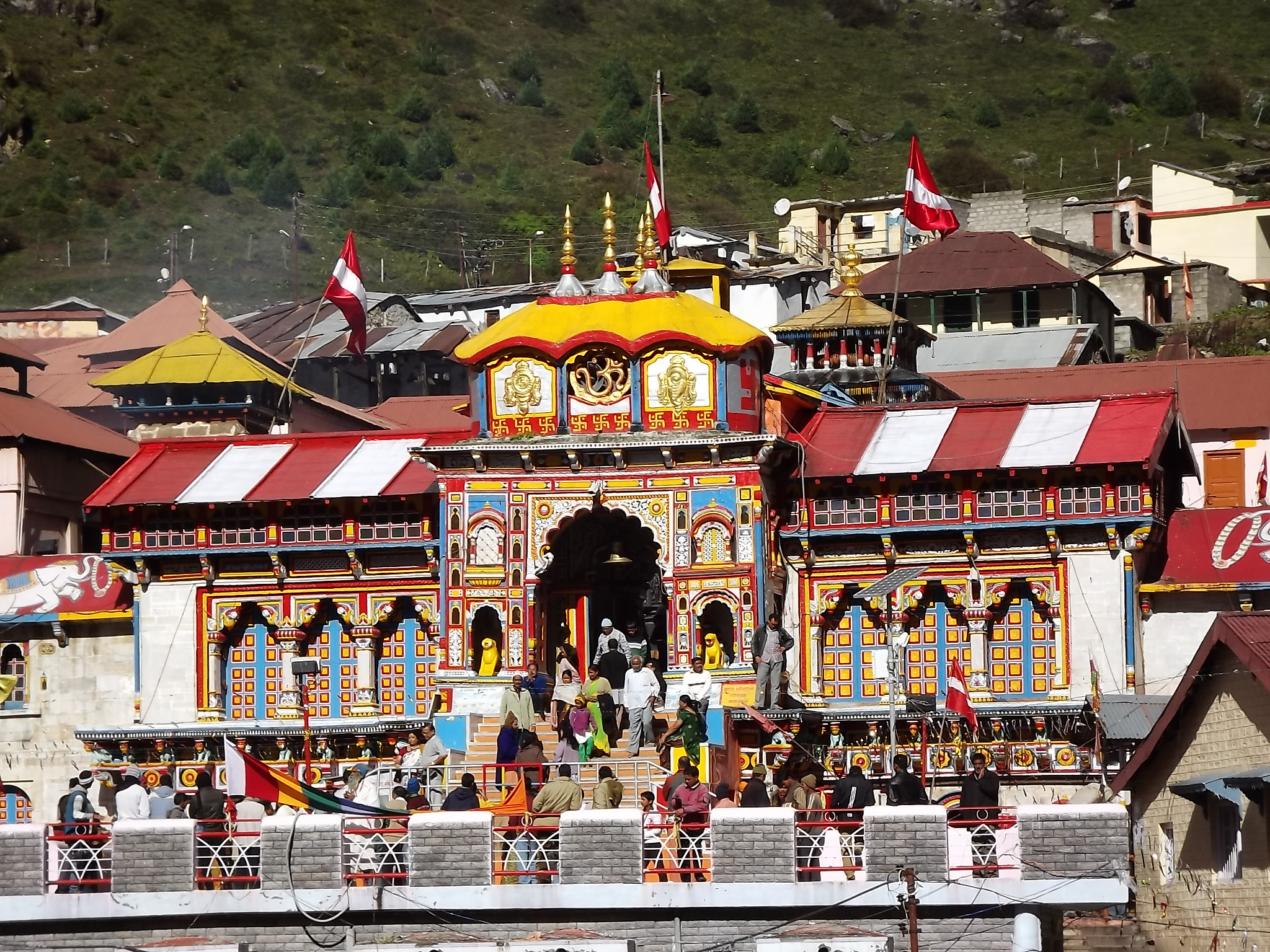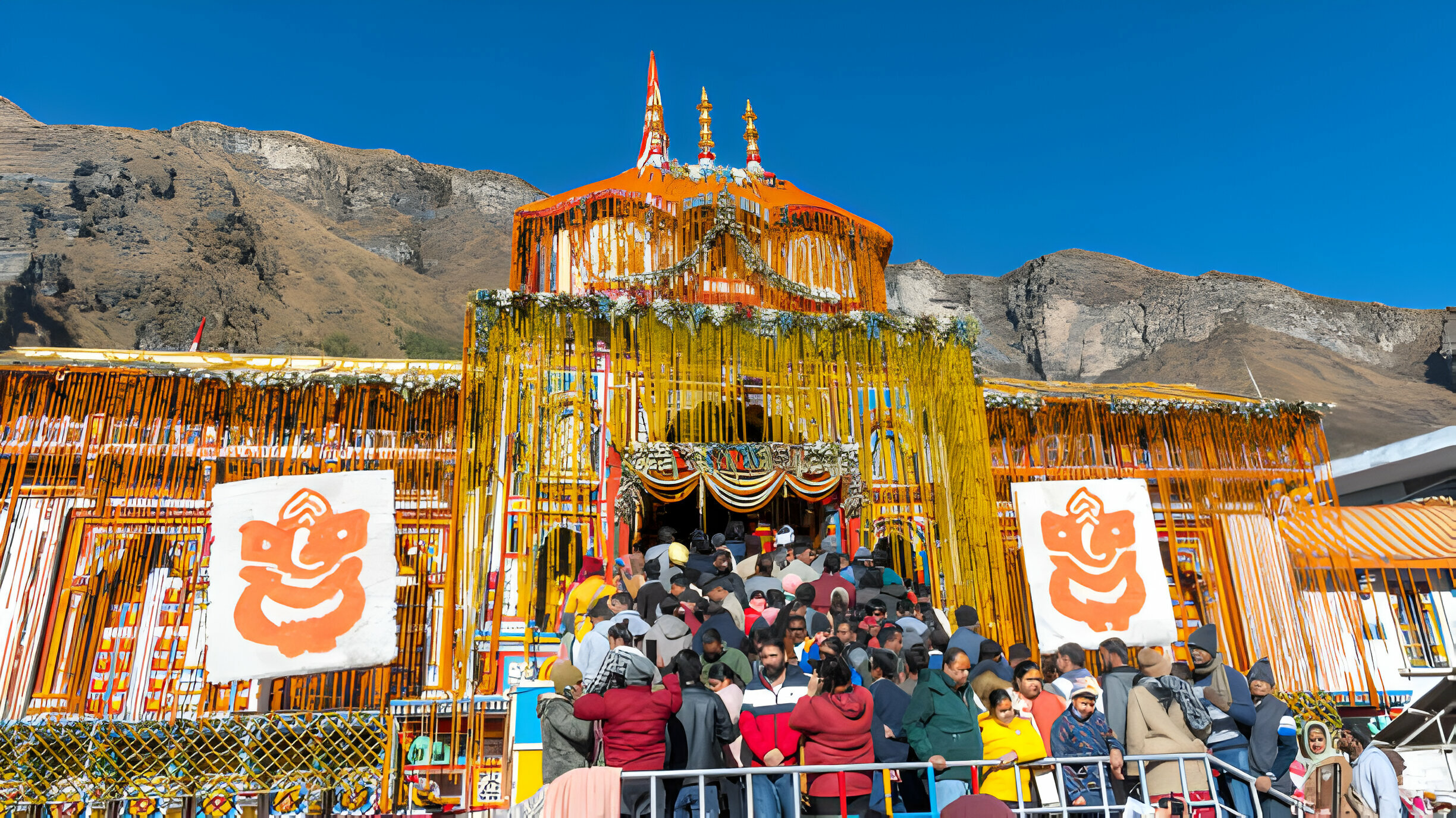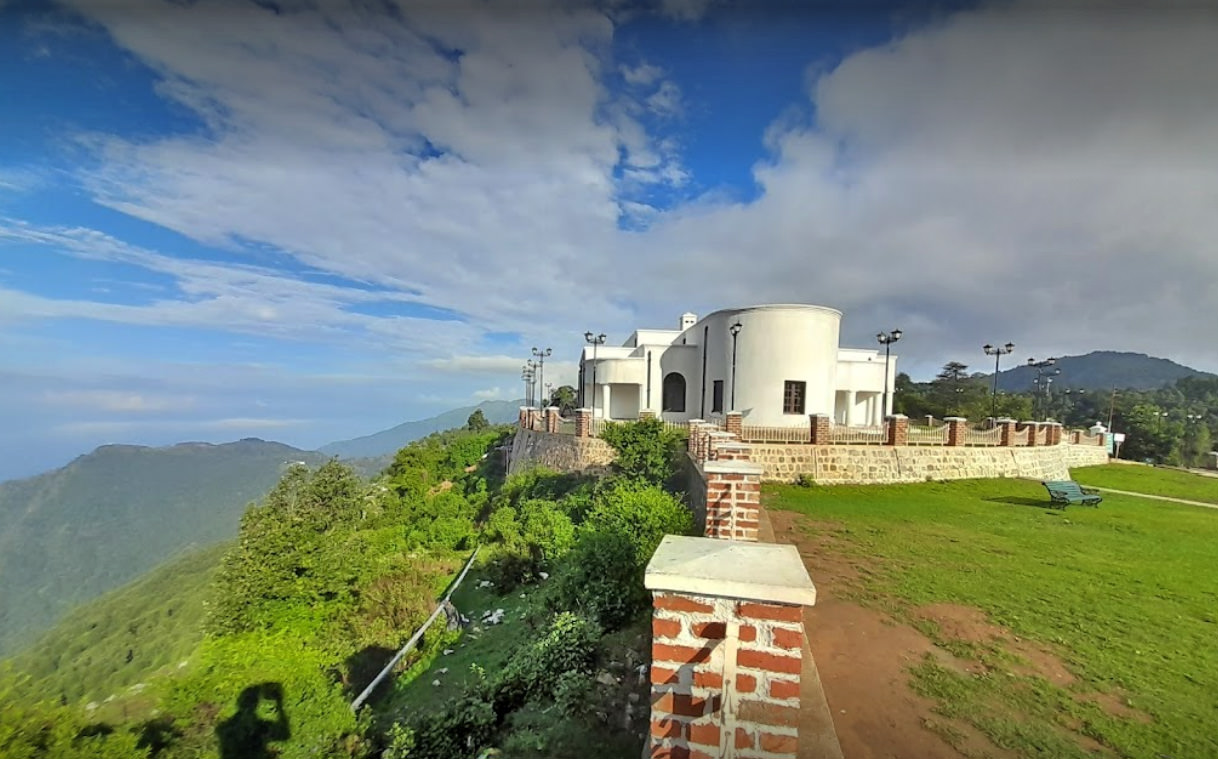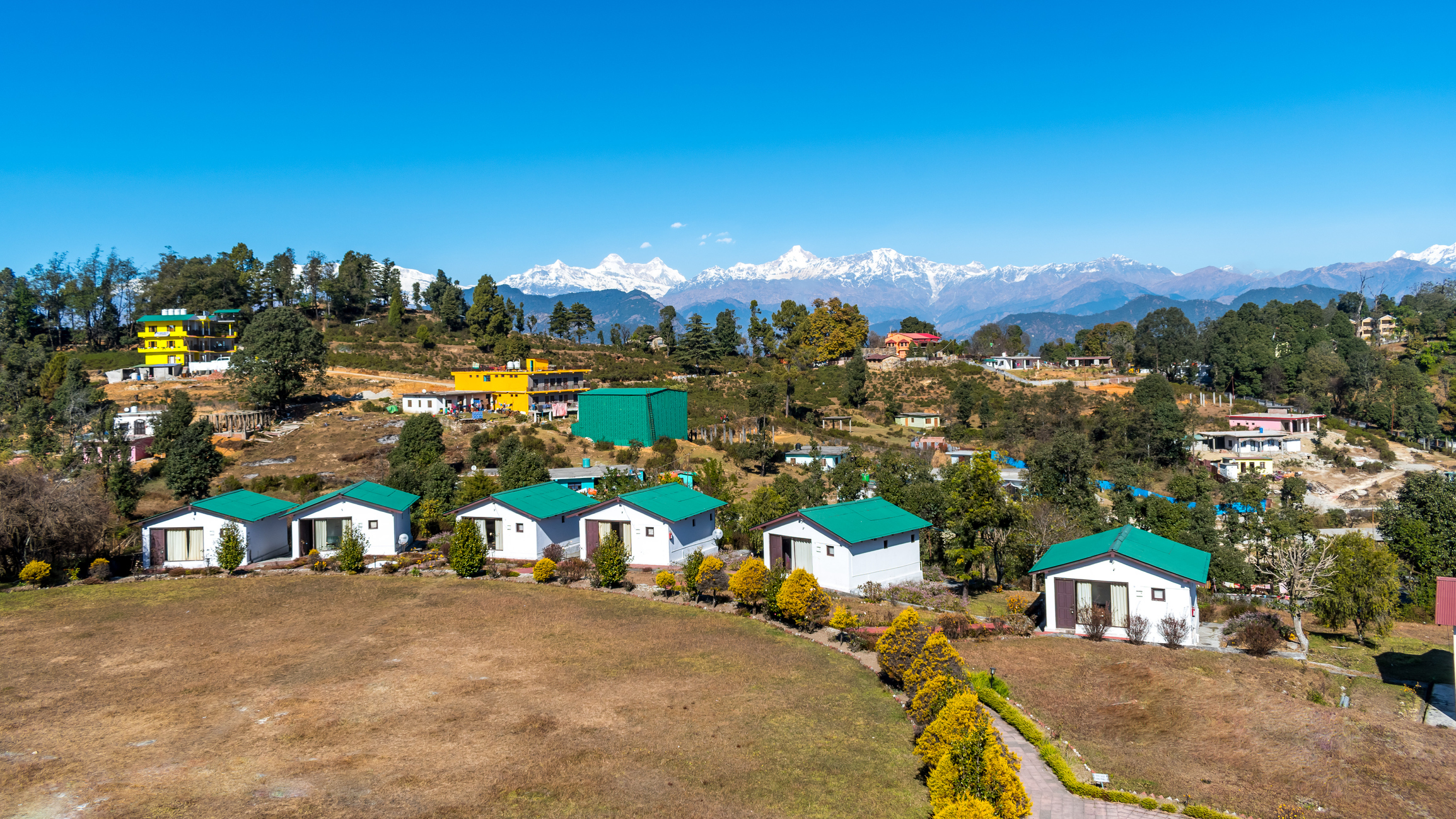Kedarnath
- Home
- Kedarnath
Kedarnath Overview
Kedarnath – The Sacred Abode of Lord Shiva
The pilgrims are cleansed of body & soul and with having achieved purity in that sense, pilgrims to Sri Kedarnath becomes most rewarding. It is also customary to worship Lord Shiva with water of Ganga, which pilgrims going from Gangotri as well take some there to Kedarnath. Kedarnath is the seat of Lord Shiva. It is one of the twelve “Jyotirlingas” of Lord Shiva. Lying at an altitude of 3584 m at the head of river Mandakini, the shrine of Kedarnath is amongst the holiest pilgrimage for the Hindus. It is no wonder that Adi Guru Shankaracharya – a great scholar & saint, chose to enshrine Lord Shiva in this land, where the unholy becomes oly and the holy becomes holier. It is the place where Lord Shiva absolved Pandavas from the sin of killing their own cousins Kauravas in the battle of Kurukshetra. The origin of the revered temple can be found in the great epic Mahabharat.
At Kedarnath there are several Kunds (pools, tanks) that are known for their religious significance – shiv kund, Retkund, hanskund, Udakkund, Rudhirkund are the most important. A little away from Kedarnath is a temple dedicated to Bhaironathji who is ceremoniously worshipped at the opening & closing of Kedarnath. The belief is that Bhairavnath Ji protects this land from evil during the time when the temple of Kedarnath is closed.
During the winters, the shrine is submerged in snow & hence is closed. Fortunate are those who have good weather, but twice blessed are those who are at Kedarnath on a moonlit night- the snow peak gleams like hundred silver pinnacles atop the glittering mountains.
The other four places where Shiva is worshipped take their appearance from different parts of his body -the naval at Madmaheshwar, the arms at Tungnath, the face at Rudranath, and the matted hair at Kalpeshwar. The latter four along with Kedarnath are known as the Panch Kedars.
SIGHTSEEING & EXCURSION :
Kedarnath Temple: An imposing sight, standing in the middle of a wide plateau surrounded by lofty snow covered peaks. The present temple, built in the 8th century A.D. by Adi Shankaracharya, stands adjacent to the site of an earlier temple built by the Pandavas. The inner walls of the assembly hall are decorated with figures of various deities and scenes from mythology. Outside the temple door a large statue of the Nandi Bull stands as guard.
Dedicated to Lord Shiva, the exquisitely architecture Kedarnath temple is considered to be more than 1000 years old. Built of extremely large, heavy and evenly cut gray slabs of stones, it evokes wonder as to how these heavy slabs had been handled in the earlier days. The temple has a “Garbha Griha” for worship and a Mandap, apt for assemblies of pilgrims and visitors. A conical rock formation inside the temple is worshipped as Lord Shiva in his Sadashiva form.
Best Time to Visit
- Summer (May to June): Pleasant weather and clear skies.
- Autumn (September to October): Ideal for trekking and pilgrimage.
- (November to April): The temple is closed, and the idol is moved to Omkareshwar Temple in Ukhimath for worship.
Why is Kedarnath Famous?
- Kedarnath Temple – A 1,200-year-old stone temple built by the Pandavas and revived by Adi Shankaracharya.
- One of the 12 Jyotirlingas – Making it among the most sacred shrines of Lord Shiva.
- Part of Char Dham Yatra – Along with Badrinath, Gangotri, and Yamunotri.
- Scenic Location – Surrounded by lofty mountains like Kedarnath Peak, Kedar Dome, and other Himalayan ranges.
- Spiritual Legends – Linked to the Mahabharata, where the Pandavas sought forgiveness from Lord Shiva.
Main Attractions in Kedarnath
- Kedarnath Temple – The heart of the pilgrimage.
- Bhairavnath Temple – Dedicated to Bhairav, the guardian deity of Kedarnath.
- Shankaracharya Samadhi – Final resting place of Adi Shankaracharya.
- Chorabari Tal (Gandhi Sarovar) – A beautiful glacial lake.
- Vasuki Tal – A high-altitude lake offering panoramic views.
Cultural and Festive Highlights
- Opening Ceremony: The temple opens every year on Akshaya Tritiya (April/May) with grand rituals.
- Closing Ceremony: The temple closes after Bhai Dooj (October/November) and the idol is moved to Ukhimath.
- Festivals: Celebrations during the Shivratri and the temple’s opening/closing days draw large crowds of devotees.
Nearby Destinations from Kedarnath
1. Guptkashi: Located about 45 km from Kedarnath, Guptkashi is a sacred town famous for the Vishwanath Temple and Ardhnareshwar Temple. It is believed that Lord Shiva hid here before appearing in Kedarnath, giving the place its name “Gupt” (hidden).
2. Triyuginarayan Temple: Situated 25 km from Kedarnath, this temple is believed to be the divine place where Lord Shiva and Goddess Parvati got married. The eternal flame here is said to have been burning since their celestial wedding.
3. Chopta: Known as the “Mini Switzerland of Uttarakhand,” Chopta lies about 64 km from Kedarnath. It is the base for the famous Tungnath Temple Trek (the highest Shiva temple in the world) and Chandrashila peak trek. The lush meadows and Himalayan views make it a must-visit.
4. Rudraprayag: Around 75 km away, Rudraprayag is one of the Panch Prayag (five confluences) where the Alaknanda and Mandakini rivers meet. It is a peaceful town known for its temples and scenic beauty.
5. Sonprayag: Located just 20 km before Kedarnath, Sonprayag is another holy confluence where River Basuki meets River Mandakini. Pilgrims often stop here before starting their trek.
6. Gaurikund: The base point of the Kedarnath trek, Gaurikund is around 16 km below Kedarnath Temple. It is home to Gauri Temple and hot water springs, associated with Goddess Parvati’s penance to marry Lord Shiva.
7. Augustmuni: About 88 km from Kedarnath, Augustmuni is known for the Rishi Agastya Temple. It is also a peaceful stop for travelers heading towards Kedarnath.
8. Deoria Tal: A serene lake located near Ukhimath, around 74 km from Kedarnath. It is surrounded by forests and offers mesmerizing reflections of snow-covered Himalayan peaks in its clear waters.
More Information..
By Air:
- Nearest Airport: Jolly Grant Airport, Dehradun (~238 km from Gaurikund).
- Taxis and buses are available from the airport to Gaurikund.
By Train:
- Nearest Railway Station: Rishikesh Railway Station (~215 km from Gaurikund).
- Buses and taxis are available to reach Gaurikund.
By Road:
- Drive or take a bus to Gaurikund, the base camp for the Kedarnath trek.
- Major towns en route: Haridwar → Rishikesh → Devprayag → Rudraprayag → Guptkashi → Gaurikund.
By Trek:
- Trek Distance: 16 km from Gaurikund to Kedarnath.
Mode of Travel:
- Trek on foot or hire ponies/palkis (palanquins).
- Helicopter services are available from Phata, Guptkashi, and Sitapur.
- Fitness: The trek requires moderate physical fitness due to the high altitude and steep climbs.
- Packing: Carry warm clothing, rain protection, trekking shoes, and essentials like water and snacks.
- Accommodation: Budget accommodations, tents, and dharamshalas are available near the temple.
Places to visit nearby..
Locate on Map..
Send an Enquiry!
Send Enquiry !
last minute deals
Kedarnath Yatra 2024
Tour Theme
Recent posts
Our Facebook page
Tour Packages
- Quality4.77
- Location4.7
- Amenities4.57
- Services4.8
- Price4.6
Chardham Yatra Ex Delhi ( 11N -12D)
Featured Tour Packages
- Quality4.77
- Location4.7
- Amenities4.57
- Services4.8
- Price4.6


